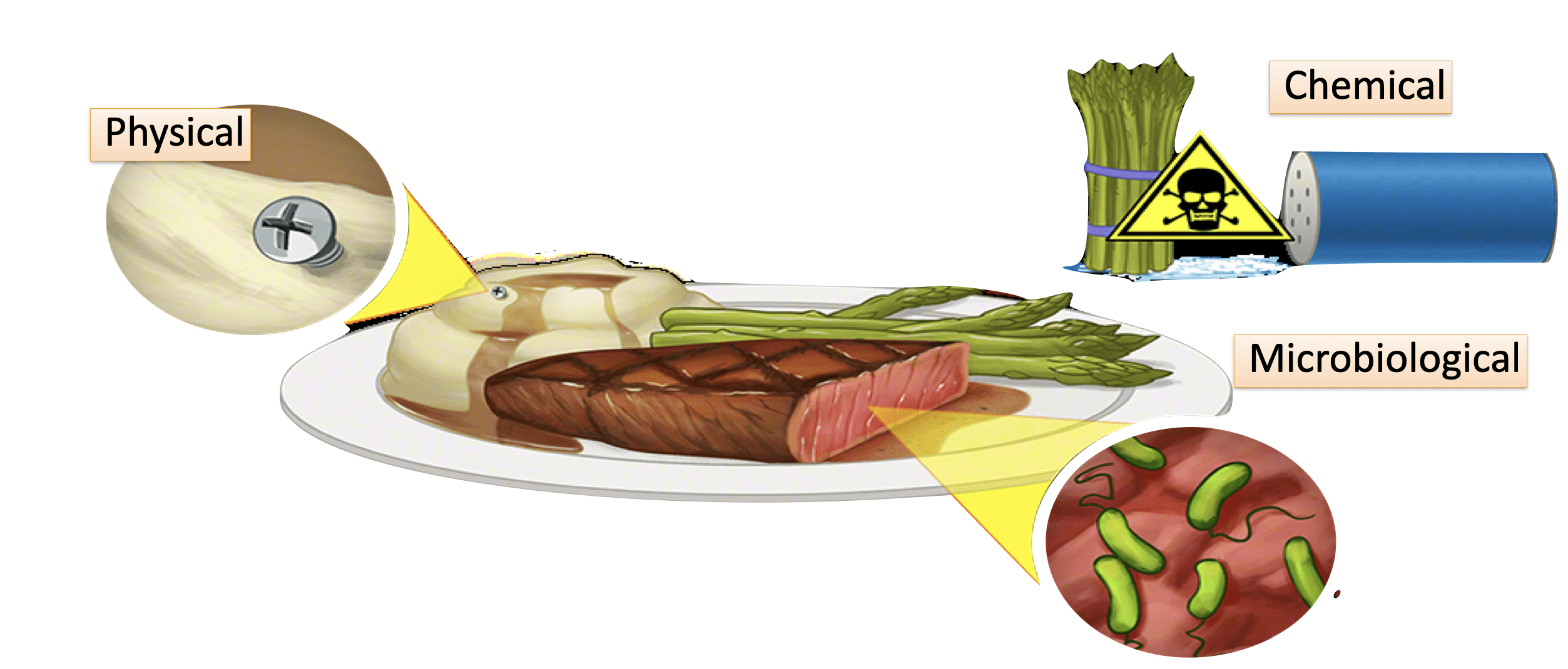Cross – contamination
Food may become contaminated in a number of ways during transport, storage, handling, processing or display.
Such contamination may occur as a result of:
- physical,
- chemical
- or microbiological contamination.
Physical contamination may result from foreign objects such as hair, fingernails, bandaids, pins, thumbtacks, metal fragments, plastic, dust, insects or other objects that can find their way into food.
Such physical contamination occurs: when food packaging does not remain intact during transport.
When food handlers do not take appropriate precautions to ensure their body, or anything from their body, does not contaminate food, when food processing and storage areas are not kept clean, when non food items are not stored separate from food preparation areas, or when equipment is not maintained.
Chemical contamination occurs when chemicals come into contact with food. This may result from chemicals such as cleaning products, sanitisers, or insect repellents being stored in close proximity to food or food processing areas, or when food contact items are cleaned and not rinsed adequately.
Chemical contamination may also occur if chemicals are stored in old food containers and not adequately labelled.
Microbiological contamination occurs from bacteria. At certain levels, bacteria may be harmless. But if food is not stored correctly, or not cooked properly, such bacteria may multiply to dangerous levels.
Bacteria may also be passed from one food to another if appropriate separations of foods does not occur, for example separating raw chicken (which naturally has a lot of bacteria which will be killed during cooking) from salad ingredients which are ready-to-eat foods and therefore the bacteria will not be killed prior to the food being consumed.
Cross-contamination is what happens when bacteria or other microorganisms are unintentionally transferred from one object to another. The most common example is the transfer of bacteria between raw and cooked food.
This is thought to be the cause of most foodborne infections. For example, when you’re preparing raw chicken, bacteria can spread to your chopping board, knife and hands and could cause food poisoning.
Cross-contamination can also happen when bacteria is transferred in ways that are harder to see. For example, via reusable shopping bags, or in the drips and splashes produced when meat is washed which can contaminate other surfaces.



